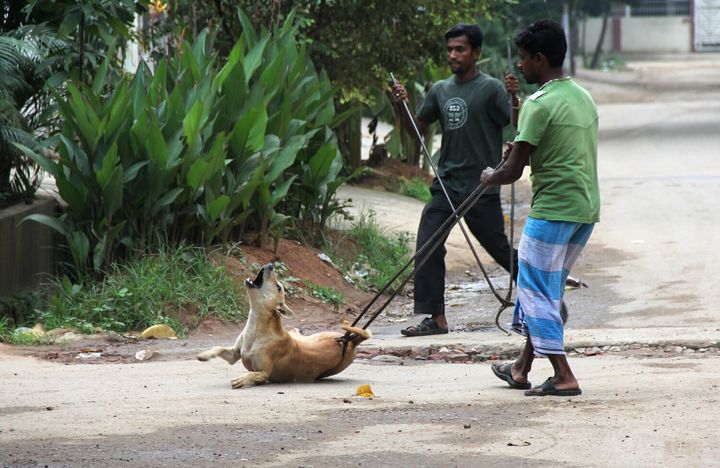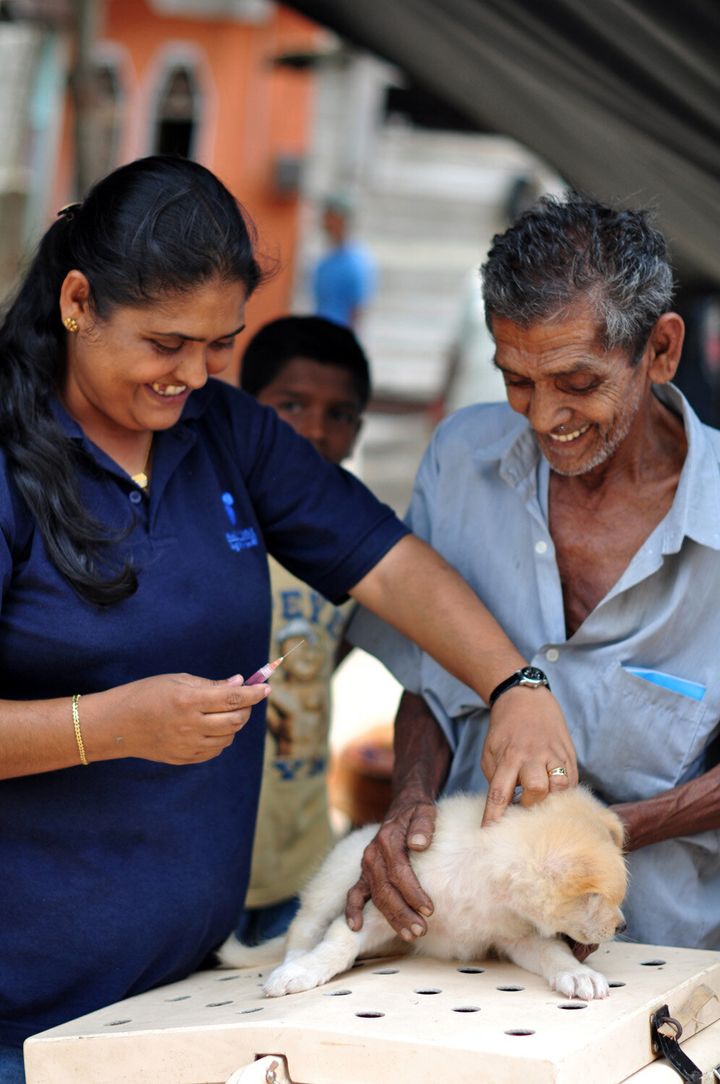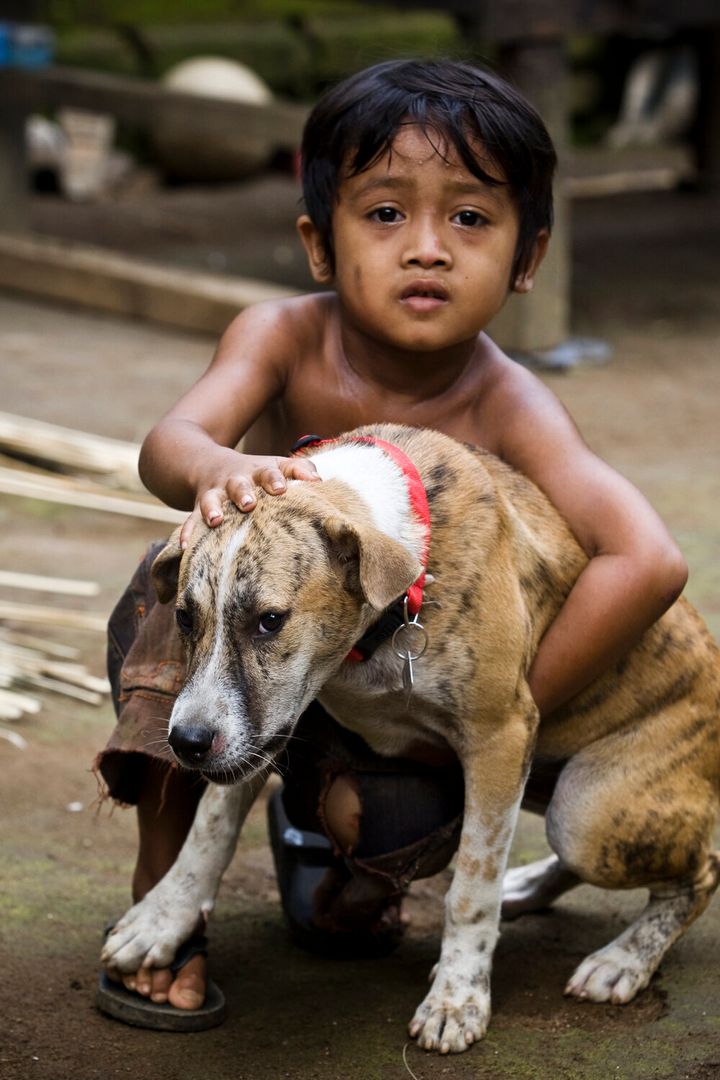According to the World Health Organisation, more than 55,000 people die a terrible death from rabies every year. 40% of them are children. The suffering endured by people who get rabies is horrible - an awful way to die, and for others to see. Our natural and understandable fear of rabies, though, has also created a fear of dogs. I am horrified by the impact of this awful disease on both humans and dogs, which is why I am so passionate about WSPA's Red Collar Campaign to tackle it.
Twenty million dogs are brutally culled every year, many because of our fear of rabies - that's 38 dogs every minute. These dogs are poisoned, shot and beaten to death. Their deaths are not immediate, or pain-free. Ultimately, these culls do not actually stop rabies - they actually create a longer-term problem, with dogs who survive the cull roaming further afield, taking the disease with them, and actually spreading rabies even further.

All of this undermines the relationship humans have with dogs, the one I experience first-hand every day with my own dogs, Cookie and Rolo - undoubtedly part of our family. Dogs were the first animal to be domesticated, before any animal which we now keep for food. The closeness has remained ever since. In WSPA's experience, the relationship between street dogs (common in two-thirds of the world) and communities in most places is really strong until rabies enters the equation. Rabies, and fear of rabies, erects an unnatural barrier between us and dogs. Yet we can work with dogs, rather than against them, in order to tackle rabies.
This is the approach championed by WSPA's Red Collar campaign: mass dog vaccination.
It combines the mass vaccination of dogs with community education, to help communities understand how to look after their dogs and what to do if they are bitten. When dogs are vaccinated they are given a red collar, a visible sign that the community is tackling rabies in a humane and effective way.
Vaccinating 70% of a dog population creates a barrier of healthy immune dogs, which prevents the disease from spreading. Unable to spread between dogs, the number of dog rabies cases decreases, and eventually dies out. When rabies in dogs is eliminated, the threat to humans is also eliminated.
Just one example of our successful mass vaccination is the programme in Bali, where we worked in conjunction with the Balinese government. In fewer than six months we vaccinated 210,000 dogs and saw a 76% decrease in dog rabies cases and a reduction of 35% in rabies-related human deaths - compared to the six months prior to the vaccination campaign.

A mass vaccination programme for dogs is no more expensive (and in fact is often cheaper) than culling and saves huge long-term health costs, because it's cheaper to proactively tackle rabies than it is to regularly cull and treat people who have been bitten, or who develop rabies. If we can save money and resources, we can help communities invest in tackling other health and social issues.
So it is possible to turn this deadly disease into a positive for animals and for people - with animals seen as something that can help and protect a community, rather than a danger and something to be worried about.

Already, we have pushed rabies back in huge parts of Latin America and it has been almost completely eradicated in West Europe. The problem is, it's not being addressed in huge sections of the world, particularly in the Asia Pacific and Africa regions. There is lack of awareness that the mass vaccination solution exists: if you are a vet in Malawi or Zimbabwe, for instance, how would you know that there is this wonderful solution, an effective method to tackling rabies, if no-one tells you that it exists? There hasn't been enough communication from international bodies, and I include ourselves, in getting the message out to the people who need to hear it the most. Many of the discussions and conversations have been done at a governmental or international level. We need to talk to local government, to local communities, and to vets on the ground, if we are to tackle rabies head on and aim to wipe out this deadly disease.
We have the solution to rabies. It has been successfully eliminated from large chunks of the world, and there is no reason we can't tackle it globally. We have wiped out smallpox and rinderpest globally; let's work to eradicating rabies next.